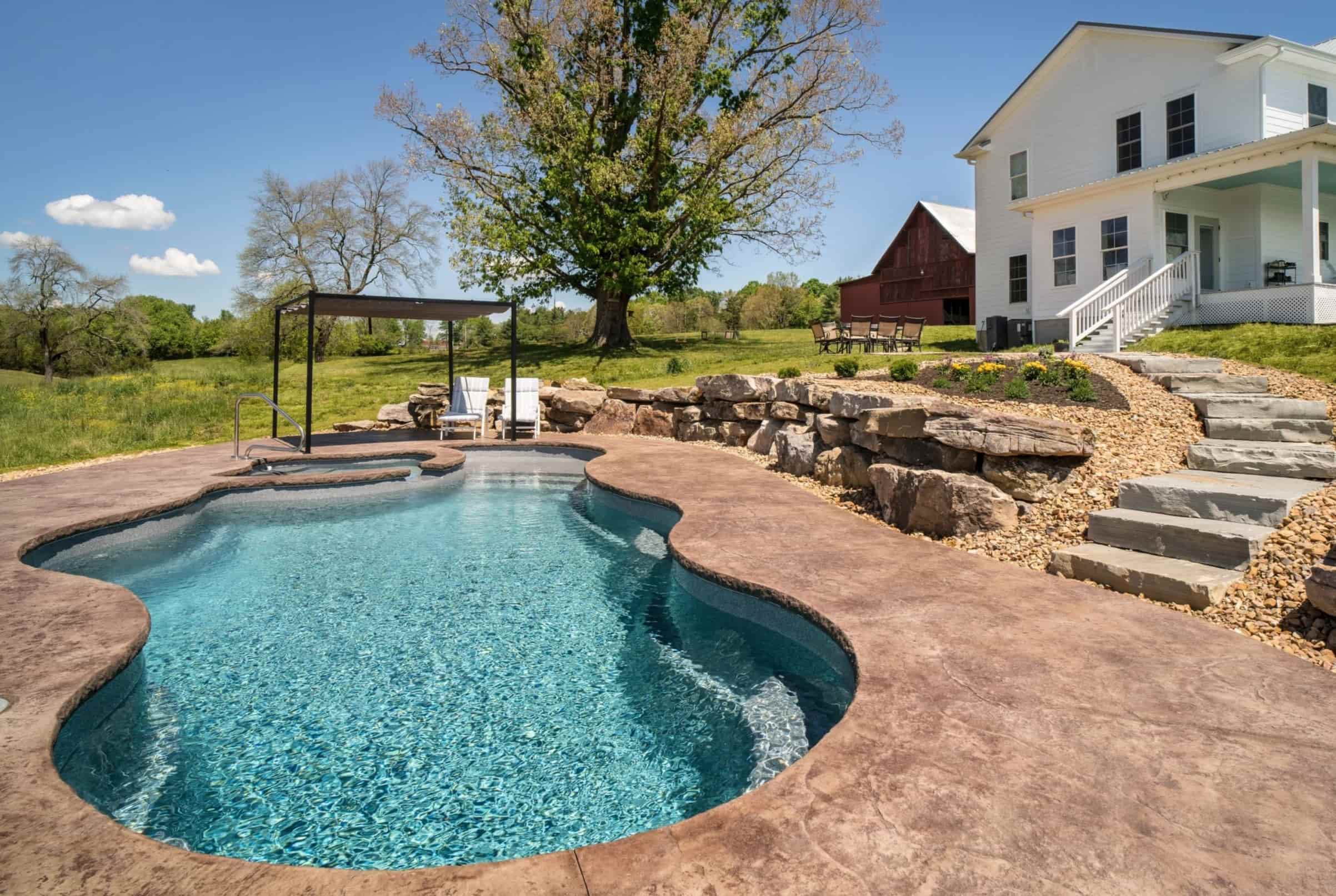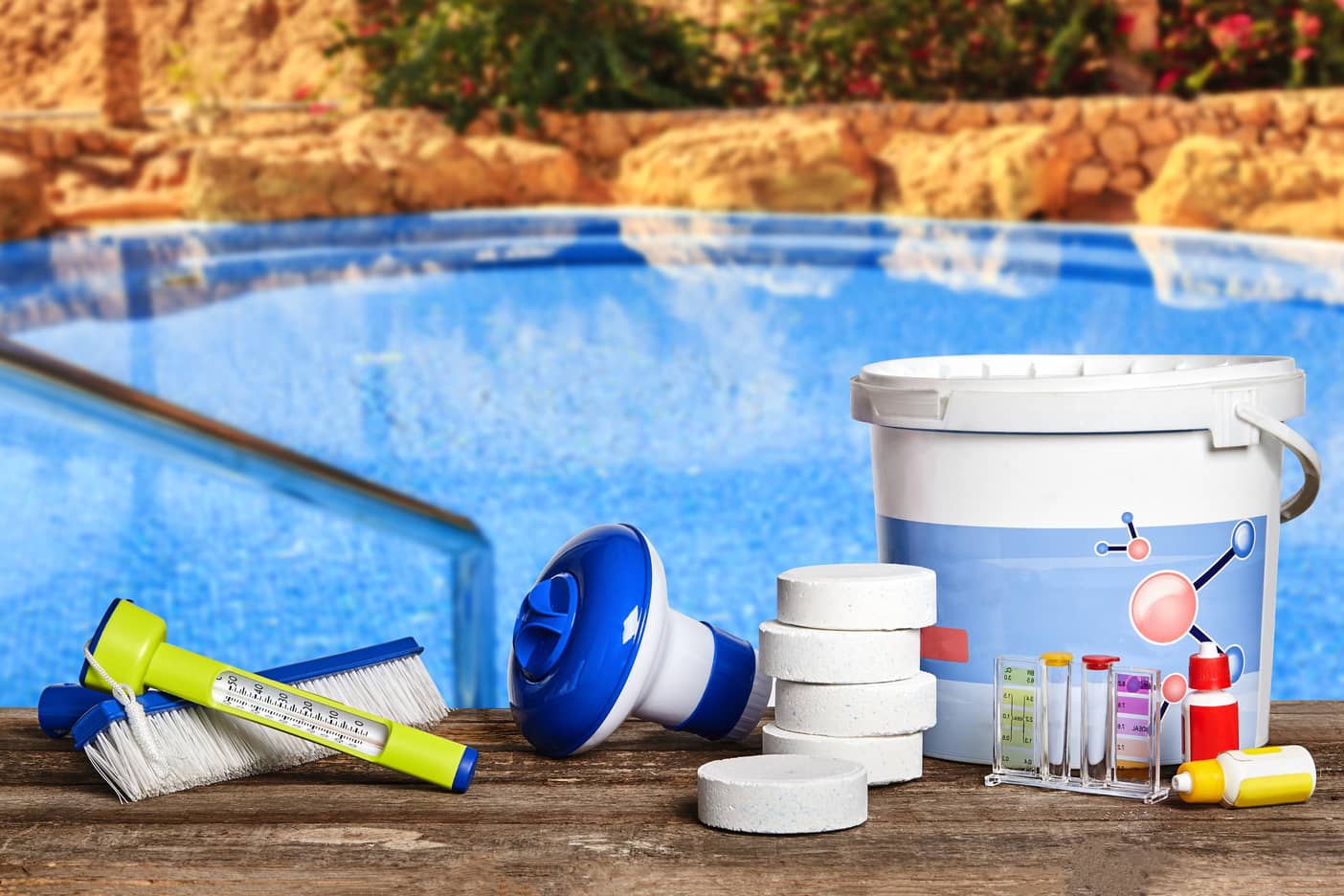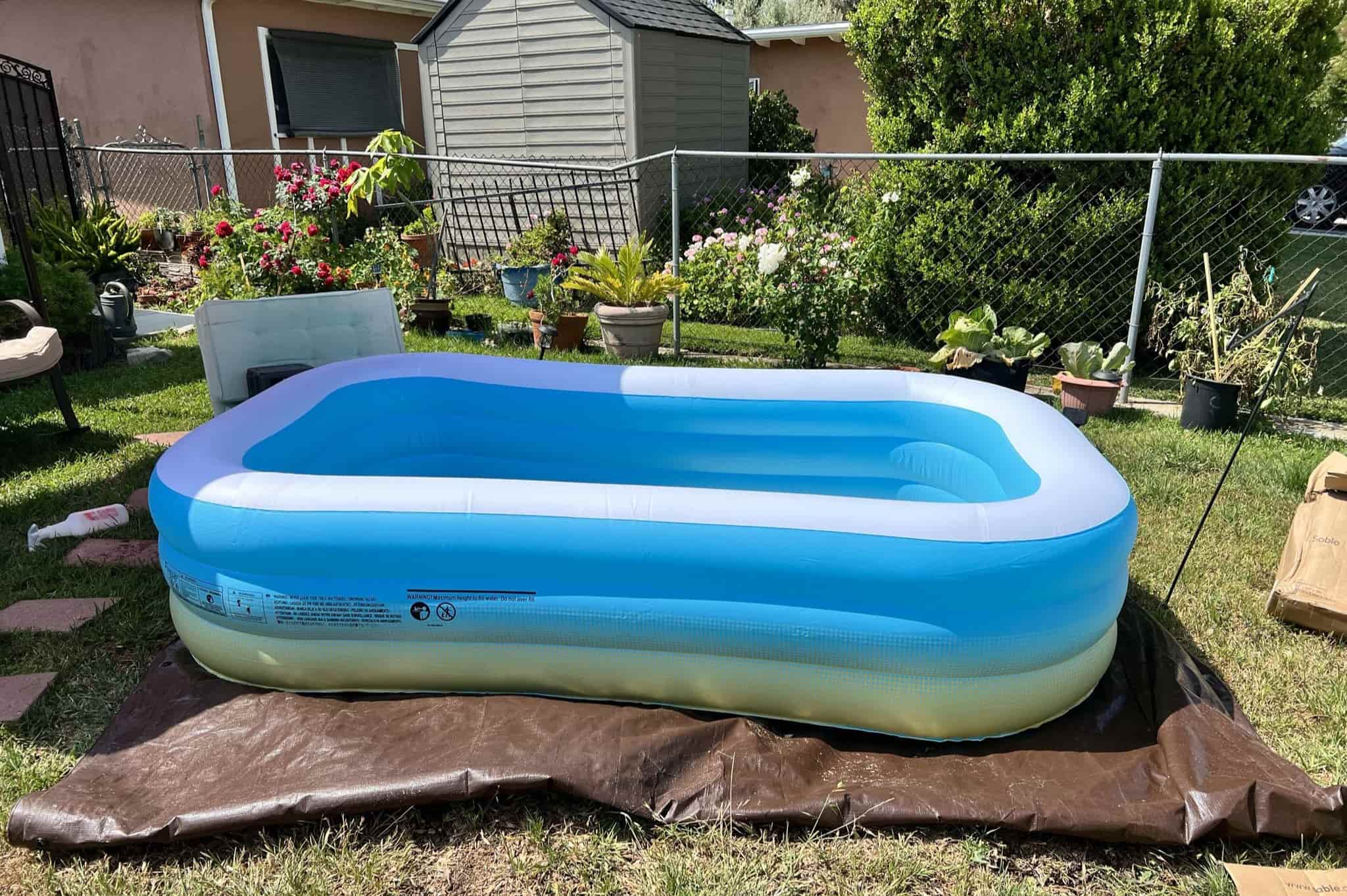Home>Gardening & Outdoor>Outdoor Recreation & Activities>How To Find Volume Of A Swimming Pool


Outdoor Recreation & Activities
How To Find Volume Of A Swimming Pool
Modified: March 25, 2024
Learn how to calculate the volume of your swimming pool with our outdoor recreation and activities guide. Master the formula and start enjoying your pool to the fullest!
(Many of the links in this article redirect to a specific reviewed product. Your purchase of these products through affiliate links helps to generate commission for Storables.com, at no extra cost. Learn more)
Introduction
When it comes to enjoying the refreshing embrace of a swimming pool, there's more to consider than just the water's temperature and the perfect cannonball technique. Understanding the volume of a swimming pool is essential for maintaining proper chemical balance, ensuring efficient filtration, and even planning for pool parties. Whether your pool is rectangular, circular, or oval, knowing how to calculate its volume is a valuable skill for any pool owner or maintenance professional.
In this comprehensive guide, we will explore the various methods for determining the volume of different pool shapes. By the end of this article, you'll be equipped with the knowledge and confidence to accurately calculate the volume of your swimming pool, allowing you to make informed decisions about pool maintenance and enjoyment.
Understanding the volume of a swimming pool is not only practical but also fascinating. It involves applying mathematical concepts to a real-world setting, transforming abstract formulas into tangible measurements. Whether you're a math enthusiast or simply someone who wants to ensure their pool is in top condition, delving into the world of pool volume calculations can be an engaging and rewarding experience.
So, let's dive into the intricacies of pool volume calculations, unravel the mysteries of geometric shapes, and equip ourselves with the tools to confidently measure the liquid expanse of our beloved swimming pools. Whether you're lounging by the poolside or preparing for a lively gathering, knowing the volume of your swimming pool will undoubtedly enhance your overall pool experience.
Key Takeaways:
- Mastering pool volume calculations helps keep your pool clean and safe. Understanding shapes like rectangles, circles, and ovals is key to maintaining a refreshing oasis for all.
- Calculating pool volume involves math and practical skills. It’s like solving a fun puzzle that ensures your pool remains a source of relaxation and enjoyment for everyone.
Read more: How To Find Swimming Pool Leaks
Understanding the Shape of the Pool
Before delving into the intricacies of calculating the volume of a swimming pool, it's crucial to understand the fundamental aspects of the pool's shape. The shape of a pool plays a pivotal role in determining the method used to calculate its volume. There are three primary shapes of swimming pools: rectangular, circular, and oval.
Rectangular Pools: These pools are characterized by their straight sides and right-angled corners. They are a popular choice for many homeowners due to their classic and versatile design. When visualizing a rectangular pool, think of it as a box-like structure with uniform width, length, and depth.
Circular Pools: Circular pools, as the name suggests, form a perfect circle. Their symmetrical shape presents a unique challenge when it comes to calculating their volume. The curvature of the circle requires a specific approach to accurately determine the amount of water it can hold.
Oval Pools: Oval pools combine the characteristics of both rectangular and circular pools. They feature rounded edges and a length that exceeds the width, creating an elliptical shape. Calculating the volume of an oval pool involves considering its unique dimensions and applying the appropriate formula to derive an accurate measurement.
Understanding the shape of the pool is the first step in the process of calculating its volume. Each shape presents its own set of challenges and considerations, requiring distinct mathematical approaches to determine the volume accurately. By grasping the distinct features of each pool shape, you'll be better equipped to proceed with the specific volume calculation method that aligns with the pool's geometry.
As we continue our exploration, we will delve into the precise calculations for each pool shape, unraveling the mathematical techniques required to measure the liquid expanse of rectangular, circular, and oval pools. By gaining a comprehensive understanding of the unique attributes of each pool shape, you'll be prepared to navigate the intricacies of pool volume calculations with confidence and precision.
Calculating the Volume of a Rectangular Pool
Calculating the volume of a rectangular pool involves applying a straightforward yet effective mathematical formula. The key to this calculation lies in understanding the dimensions of the pool and utilizing them to derive the volume accurately.
To begin, let's consider the essential measurements required for calculating the volume of a rectangular pool. These measurements typically include the length, width, and depth of the pool. Once these dimensions are known, the volume can be determined using the formula: Volume = Length × Width × Depth.
The length of the pool refers to the longest distance from one end to the other, while the width represents the shorter distance from side to side. The depth signifies the vertical distance from the water surface to the bottom of the pool. By multiplying these three dimensions together, the total volume of the pool in cubic units can be obtained.
For example, if a rectangular pool has a length of 30 feet, a width of 15 feet, and a depth of 5 feet, the volume can be calculated as follows:
Volume = 30 feet × 15 feet × 5 feet = 2250 cubic feet.
It's important to ensure that all measurements are in the same unit of length, such as feet or meters, to maintain consistency in the calculation.
Once the volume of the rectangular pool is determined, it provides valuable information for pool maintenance and chemical treatment. Understanding the volume allows for accurate dosing of pool chemicals, such as chlorine and pH adjusters, to maintain water quality. Additionally, knowing the volume is essential for determining the appropriate filtration and circulation requirements to keep the pool water clean and inviting.
By mastering the method for calculating the volume of a rectangular pool, pool owners and maintenance professionals can confidently manage the upkeep of their pools, ensuring a safe and enjoyable swimming environment for all. This foundational knowledge serves as a cornerstone for effective pool maintenance and contributes to the overall longevity and functionality of the pool.
Understanding the volume of a rectangular pool not only facilitates practical maintenance but also fosters a deeper appreciation for the geometric intricacies of pool design. It transforms the pool from a mere recreational space into a tangible mathematical entity, bridging the realms of leisure and science. This fusion of practicality and intellectual engagement underscores the multifaceted nature of pool ownership and maintenance, enriching the overall pool experience.
As we continue our exploration of pool volume calculations, we will unravel the methods for determining the volume of circular and oval pools, further expanding our proficiency in understanding and managing the liquid expanse of these aquatic retreats.
To find the volume of a swimming pool, measure the length, width, and depth. Then use the formula: Volume = length x width x depth. Make sure all measurements are in the same units (e.g. feet or meters).
Calculating the Volume of a Circular Pool
Calculating the volume of a circular pool involves a unique approach due to the symmetrical nature of its shape. Unlike rectangular pools, which have distinct length, width, and depth measurements, circular pools require specific formulas to accurately determine their volume.
To begin the calculation, the primary measurement needed is the pool's radius, which is the distance from the center of the circle to its outer edge. Once the radius is known, the volume of the circular pool can be calculated using the formula: Volume = π × Radius^2 × Depth, where π (pi) is a mathematical constant approximately equal to 3.14159.
The radius of the pool plays a central role in the volume calculation, as it directly influences the area of the circular base. By squaring the radius and multiplying it by the depth of the pool, the total volume in cubic units can be derived.
For example, if a circular pool has a radius of 10 feet and a depth of 6 feet, the volume can be calculated as follows:
Volume = 3.14159 × 10 feet × 10 feet × 6 feet = 1884.9546 cubic feet.
It's important to note that all measurements should be in the same unit of length, such as feet or meters, to ensure consistency in the calculation.
Understanding the volume of a circular pool is essential for various aspects of pool maintenance and management. It serves as a foundational metric for determining the appropriate chemical treatment and filtration requirements. Additionally, knowing the volume enables accurate water circulation planning, contributing to the overall cleanliness and hygiene of the pool.
Mastering the method for calculating the volume of a circular pool empowers pool owners and maintenance professionals to make informed decisions regarding water treatment and maintenance. This knowledge forms the basis for creating a safe and inviting swimming environment, ensuring that the pool remains a source of relaxation and enjoyment for all.
Delving into the intricacies of circular pool volume calculations not only enhances practical maintenance skills but also fosters a deeper appreciation for the elegance of geometric shapes in the context of recreational spaces. It underscores the seamless fusion of mathematical principles and real-world applications, enriching the overall experience of pool ownership and maintenance.
As we continue our exploration of pool volume calculations, we will further expand our proficiency by unraveling the methods for determining the volume of oval pools, adding to our comprehensive understanding of managing the liquid expanse of these aquatic retreats.
Calculating the Volume of an Oval Pool
Calculating the volume of an oval pool involves a unique approach due to its elliptical shape, which combines the characteristics of both rectangular and circular pools. The distinctive dimensions of an oval pool require a specific formula to accurately determine its volume.
To initiate the calculation, the primary measurements required are the pool's length, width, and average depth. The length represents the longest distance from one end of the oval to the other, while the width signifies the shorter distance across the pool. The average depth refers to the overall vertical distance from the water surface to the bottom of the pool.
The formula for calculating the volume of an oval pool is: Volume = π × Length × Width × Average Depth, where π (pi) is a mathematical constant approximately equal to 3.14159. By multiplying π with the product of the length, width, and average depth, the total volume in cubic units can be accurately determined.
For example, if an oval pool has a length of 40 feet, a width of 20 feet, and an average depth of 7 feet, the volume can be calculated as follows:
Volume = 3.14159 × 40 feet × 20 feet × 7 feet = 17,584.812 cubic feet.
It is crucial to ensure that all measurements are in the same unit of length, such as feet or meters, to maintain consistency in the calculation.
Understanding the volume of an oval pool is essential for effective pool maintenance and management. It serves as a fundamental metric for determining the appropriate chemical treatment, filtration requirements, and water circulation planning. By accurately calculating the volume, pool owners and maintenance professionals can make informed decisions to maintain water quality and hygiene, ensuring a safe and enjoyable swimming environment for all.
Mastering the method for calculating the volume of an oval pool empowers individuals to take proactive measures in maintaining their pools, contributing to the overall longevity and functionality of the aquatic retreat. This knowledge not only enhances practical maintenance skills but also fosters a deeper appreciation for the intricate geometry of oval pools, enriching the overall experience of pool ownership and maintenance.
As we conclude our exploration of pool volume calculations, we have unraveled the methods for determining the volume of rectangular, circular, and oval pools, equipping individuals with the proficiency to manage the liquid expanse of these aquatic retreats with confidence and precision.
Read more: How To Find A Leak In A Swimming Pool Liner
Conclusion
In conclusion, the process of calculating the volume of a swimming pool is a multifaceted endeavor that intertwines mathematical precision with practical applications in pool maintenance and management. By understanding the unique attributes of rectangular, circular, and oval pools, individuals can confidently navigate the intricacies of pool volume calculations, ensuring the efficient and effective management of these aquatic retreats.
The journey of exploring pool volume calculations has unveiled the fundamental role of geometry and mathematical formulas in transforming the abstract concept of pool volume into tangible measurements. From the straightforward dimensions of a rectangular pool to the symmetrical elegance of circular and oval pools, each shape presents its own set of challenges and considerations, requiring distinct mathematical approaches to determine the volume accurately.
Mastering the methods for calculating pool volume empowers pool owners and maintenance professionals to make informed decisions regarding chemical treatment, filtration requirements, and water circulation planning. This foundational knowledge serves as a cornerstone for creating a safe and inviting swimming environment, ensuring that the pool remains a source of relaxation and enjoyment for all.
Furthermore, the understanding of pool volume extends beyond practical maintenance and management; it fosters a deeper appreciation for the seamless fusion of mathematical principles and real-world applications. It transforms the pool from a mere recreational space into a tangible mathematical entity, enriching the overall pool experience and highlighting the multifaceted nature of pool ownership and maintenance.
As individuals delve into the intricacies of pool volume calculations, they not only enhance their practical maintenance skills but also gain a deeper understanding of the geometric intricacies of pool design. This fusion of practicality and intellectual engagement underscores the multifaceted nature of pool ownership and maintenance, enriching the overall pool experience.
In essence, the knowledge and proficiency gained in calculating the volume of swimming pools contribute to the overall longevity, functionality, and enjoyment of these aquatic retreats. By unraveling the methods for determining the volume of rectangular, circular, and oval pools, individuals are equipped with the proficiency to manage the liquid expanse of these aquatic retreats with confidence and precision, ensuring that the pool remains a captivating and refreshing oasis for all who seek its embrace.
Frequently Asked Questions about How To Find Volume Of A Swimming Pool
Was this page helpful?
At Storables.com, we guarantee accurate and reliable information. Our content, validated by Expert Board Contributors, is crafted following stringent Editorial Policies. We're committed to providing you with well-researched, expert-backed insights for all your informational needs.















0 thoughts on “How To Find Volume Of A Swimming Pool”